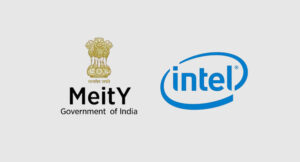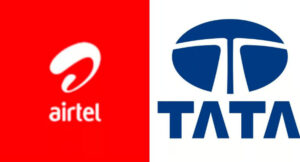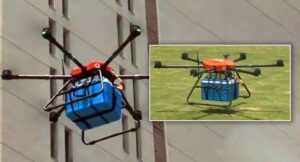Over a month after Bharti Airtel and Jio signed agreements with SpaceX to distribute Starlink satellite internet services in India, Indus Towers said it does not anticipate any impact on its operations from such developments.
“Based on our discussions with telecom operators, there are limitations and commercial constraints as far as satellite technology is concerned,” Prachur Sah, managing director and CEO of Indus Towers, said during a call with analysts on Thursday to discuss the January-March quarter earnings.
“So, we don’t see any risk for the terrestrial networks in the foreseeable future and I don’t expect that to impact us any time soon,” he added.
Comments from Sah assume significance as there were concerns that its tower infrastructure business could get affected once satellite internet services tap the Indian markets. This is because satellite internet beams connectivity directly from satellites to user terminals, thereby reducing the dependence on tower infrastructure for connectivity especially in rural markets in the long run, according to analysts. Further, the company’s stock also witnessed selling pressure and fell 8% on 12 March after telecom operators announced partnerships with SpaceX.
Analysts, however, do not expect Starlink to be disruptive to Indian telecom companies at least in the near-to-medium term. “Starlink is unlikely to be disruptive for three reasons. Its capacity constraints will necessitate premium pricing, it needs telco tie-ups for distribution/installation and backhaul, and the government also seems to be inclined to balance the interests of telcos and satellite operators,” said brokerage Jefferies in a note dated 27 March.
Vodafone clears dues
Indus Towers is a subsidiary of Bharti Airtel, which owns 50% in the company. Besides Airtel, the tower company also counts Vodafone Idea as one of its major customers. In March, Vodafone Idea had cleared all undisputed overdue amounts to Indus Towers, thereby helping the towers company increase its operating free cash flow by 73% year-on-year (Y-o-Y) to ₹1,257 crore in the January-March quarter.
“Our continued engagement with a major customer (Vodafone Idea) ensured recovery of its overdues this year,” Sah said. In FY25, Vodafone Idea cleared about ₹5,100 crore dues it owed to Indus Towers.
“Given that now we have the backlog issue behind us…the strategy includes aggressively pursuing market share through both organic and inorganic routes as demonstrated by our acquisition of Bharti Airtel’s towers. With the scale of Indus, we are working on transforming our site infrastructure and leveraging digital solutions and AI to create new benchmarks of performance,” Sah said, adding that this would encourage customers to move tenancies to Indus.
During the quarter, analysts had expected Indus Towers to announce dividends for its shareholders. However, the company said it has formed a committee to assess the modalities of cash distribution to the shareholders, and it will soon make disclosures to the exchanges on the same. Last year, the company conducted a ₹2,640 crore share buyback—its first since 2016.
On its announcement to foray into the electric vehicle (EV) charging infrastructure space in the preceding quarter, Sah said the company is conducting the commercial pilot and based on that it will take a call whether to expand or hold back the same.
Acquires more towers
In the January-March quarter, Indus Towers revenue from operations grew 7.4% y-o-y to ₹7,727 crore on the back of growth in network rollout by telecom operators amid higher data consumption trends. The company’s net profit fell 4% to ₹1,779 crore owing to the impact of operating expenses and depreciation. During the quarter, the company acquired 12,774 towers worth ₹2,174 crore from Bharti Airtel.
As on 31 March 2025, Indus Towers had 249,305 towers, adding 14,662 from a quarter ago and 29,569 from the year ago period. Its co-locations were at 405,435, up 18,616 from the previous quarter and 36,847 from the year ago.
Co-locations mean the number of telecom operators (or tenants) that have installed their equipment on a single tower. An increase in co-locations leads to higher recurring revenue for tower companies like Indus Towers.
On Thursday, shares of Indus Towers ended up 1.3% at ₹408.05 on the BSE.
Key takeaways
The company, a major telecom infrastructure provider, stated it does not foresee any risk from satellite internet services affecting terrestrial networks in the near future.
Vodafone Idea repaid ₹5,100 crore in dues to Indus Towers, improving the company’s financial standing and boosting operating free cash flow.
Indus Towers is testing an electric vehicle charging infrastructure venture and will decide whether to expand or halt the project based on results.
The company reported a 7.4% year-on-year increase in revenue due to telecom network expansion, but net profit fell by 4% due to operating expenses and depreciation.
Indus Towers acquired 12,774 towers from Bharti Airtel and now owns 249,305 towers, increasing its co-location count, which enhances revenue potential. LiveMint









